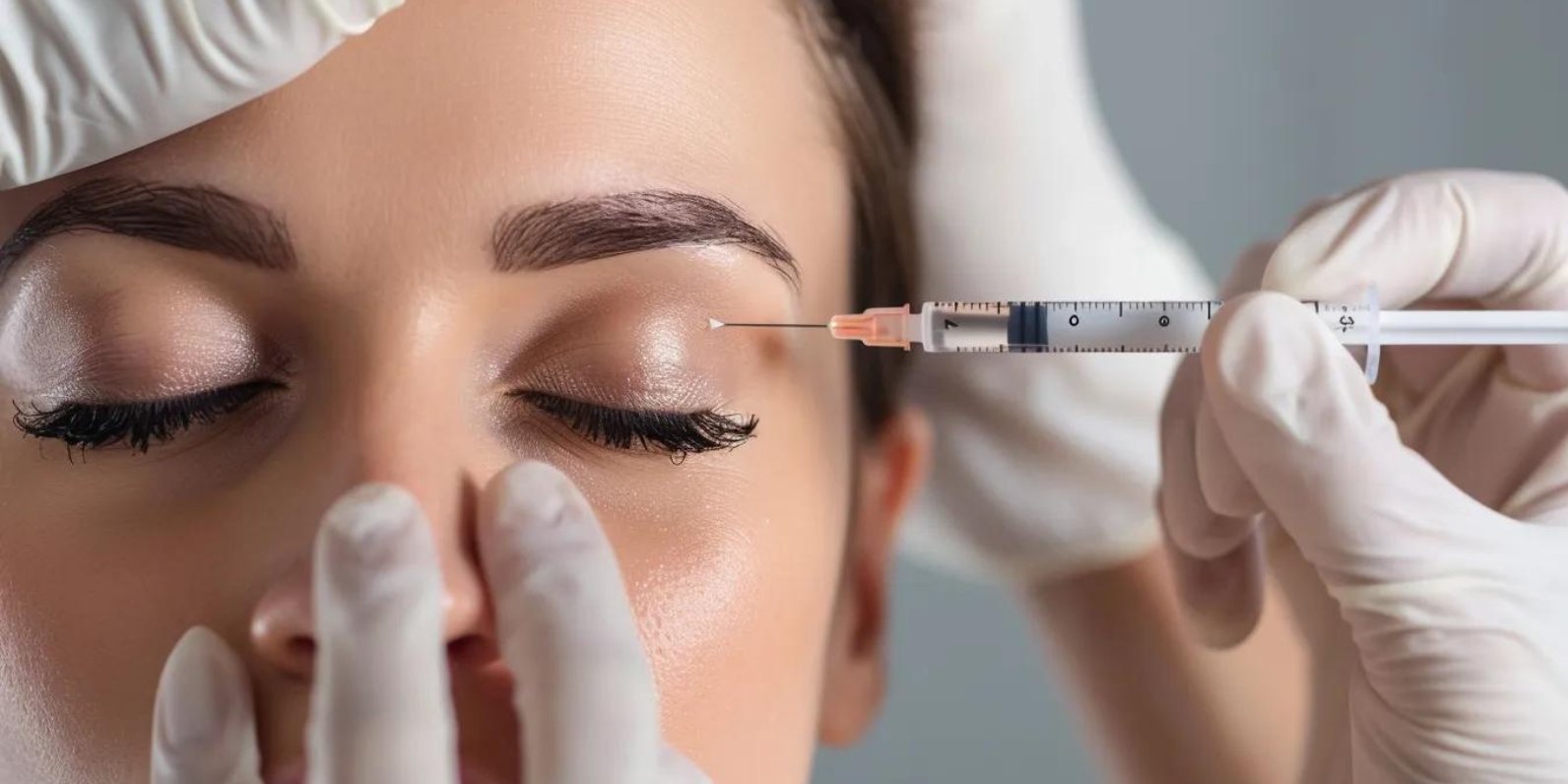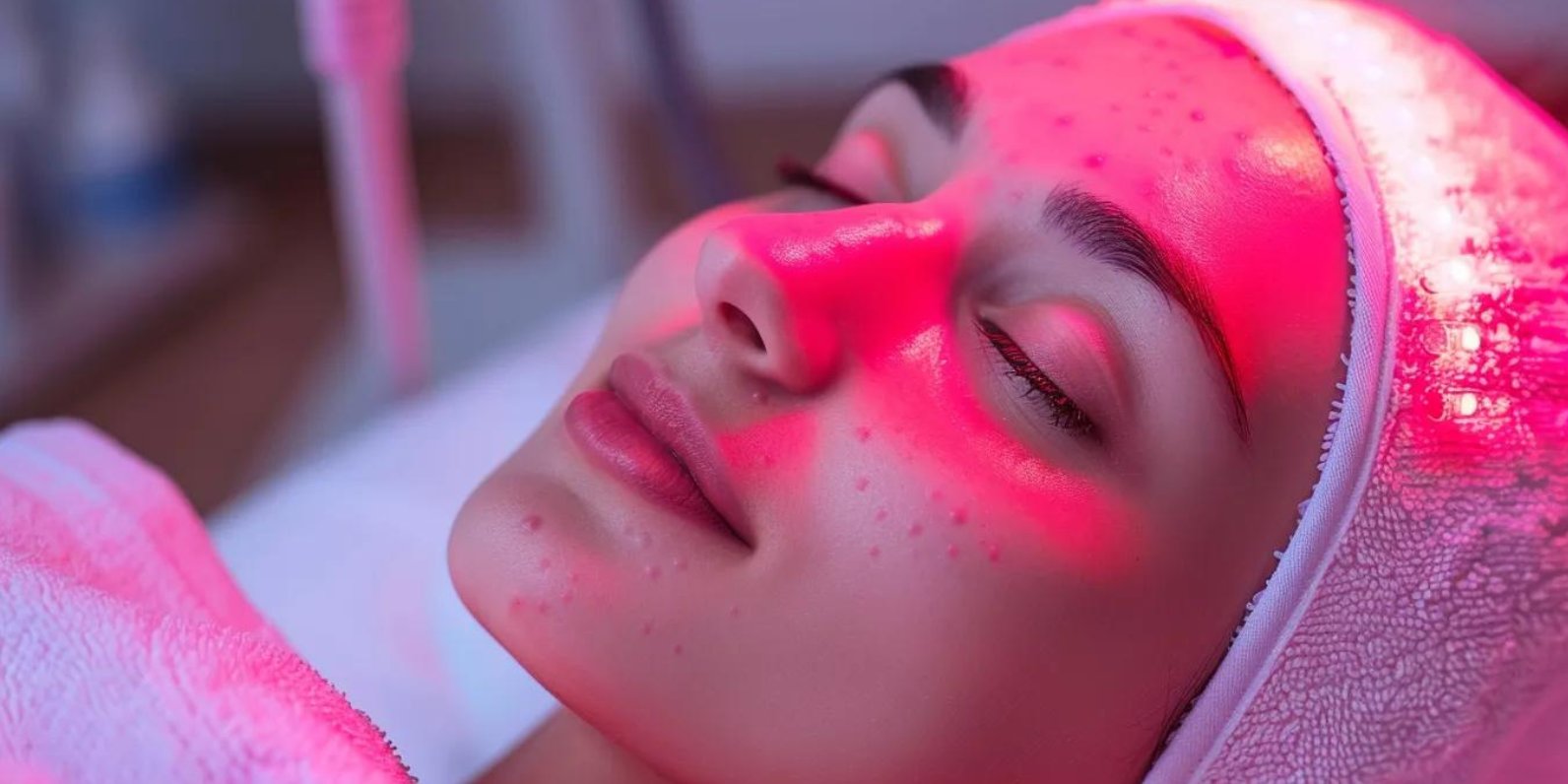The best treatment for facial skin laxity depends on how loose your skin is. For mild to moderate sagging, Ultherapy is often the top choice, with 85% of patients satisfied with results. For more severe laxity, combining treatments like radiofrequency with injectable filler gives better results.
This guide will help you understand all your options. We’ll cover non-surgical treatments, surgical choices, and how to pick the right one for your needs and skin health.
Understanding Facial Skin Laxity
Facial skin laxity means your skin has lost its tight, firm feel. Your skin loses collagen and elastin as you age – these are the proteins that keep skin bouncy and smooth. Think of collagen as the frame of a house and elastin as the springs that help it snap back. As we age, the dermis layer becomes thinner and connective tissue weakens, leading to visible signs of ageing.
What Causes Loose Facial Skin
According to the American Academy of Dermatology, collagen production starts declining as early as your 20s. Several things make this worse, including natural aging where your body makes less collagen each year, and sun damage from UV rays that break down collagen fibers. Genetics also play a role, as some people lose elasticity faster than others. Weight changes, especially rapid weight loss, can leave skin loose. Smoking reduces blood flow and damages collagen, while poor skin care habits that don’t protect your skin speed up the aging process. Environmental factors like pollution can also accelerate skin damage.
Signs You Have Skin Laxity
You might notice sagging around your jawline called jowls, loose skin on your neck, or drooping eyelids and brows. Deep wrinkle formation and loss of definition in your face shape are also common signs of skin laxity. Some patients also notice changes in their cheek area and around the chin, where fat pads may shift and skin begins to droop due to gravity.
Non-Surgical Treatments for Facial Skin Laxity
Non-surgical options are perfect if you want results without plastic surgery. These treatments work by heating your skin to make new collagen and improve skin texture. A skilled physician can recommend the best approach based on your individual needs and medical history.
Ultherapy: The Gold Standard
Ultherapy has been recognized as the Gold Standard for nonsurgical skin lifting with over 3 million treatments performed worldwide and 95% patient satisfaction at year one. This treatment uses focused ultrasound energy to heat deep layers of your skin and stimulate tissue regeneration.
How Ultherapy Works: Ultherapy uses micro-focused ultrasound to treat superficial skin layers at lower energy levels. It heats tissue at precise depths of 2mm, 3.5mm, and 4.5mm to target the SMAS fascia layer that only plastic surgery could reach before. This stimulates collagen production for gradual lifting without any scar formation.
What to Expect: Some patients see results immediately, while others notice changes in 2-3 months. Full results develop over 6 months as new collagen forms, and results can last 1-2 years or longer with proper skin care. Treatment takes about 2 hours and you can return to normal activities right away. The procedure may cause temporary redness but no significant injury to surrounding tissue.
Best For: Ultherapy works best for mild to moderate skin laxity in patients aged 30s to 60s who want natural-looking results without plastic surgery. It’s particularly effective for facial rejuvenation of the eyebrow, forehead, and jawline areas.
Radiofrequency Treatments
Radiofrequency uses electromagnetic fields to heat tissue and stimulate collagen production. This technology has proven efficacy in improving skin elasticity and reducing wrinkle formation. Popular options include:
Morpheus8: Morpheus8 combines microneedling with radiofrequency energy to penetrate deeper skin layers and work on face, neck, and body. It can reach up to 8mm deep for better results and is excellent for collagen induction therapy. This treatment helps improve skin texture and can address stretch marks and acne scars.
Thermage: Thermage heats deep skin layers without damaging the surface through radiofrequency technology. You may need 3-5 treatments with results appearing 2-6 months after the last session. It’s effective for improving skin moisture retention and overall complexion.
EmFace: EmFace combines radiofrequency with high-intensity facial muscle stimulation. Studies show 81% improvement in skin firmness at 6 months according to research published in Lasers in Surgery and Medicine. This treatment tightens skin while strengthening facial muscles, making it ideal for comprehensive facial rejuvenation.
Laser Treatments and Photorejuvenation
Several laser options can help tighten loose skin and improve overall skin health through photorejuvenation:
Fractional Lasers: Fractional lasers remove outer layers of old skin through controlled injury and warm deeper layers to boost collagen. They include CO2 and carbon dioxide lasers with more downtime but stronger results. These treatments can also help with acne scars and improve skin texture.
Non-Ablative Lasers: Non-ablative lasers heat deeper skin without removing surface layers through photorejuvenation technology. SkinTyte uses intense pulsed light (IPL) to target loose skin and boost collagen with less downtime than ablative options. This approach is gentler and requires no significant recovery time.
Laser Hair Removal Integration: Many patients combine skin tightening with laser hair removal for comprehensive skin improvement. The laser hair removal process can stimulate collagen production while addressing unwanted hair concerns simultaneously.
Thread Lifts and Injectable Fillers
PDO Thread Lifts use absorbable sutures to lift sagging skin and stimulate collagen production. These threads dissolve over time but leave behind new collagen for lasting results. They provide an immediate lifting effect with minimal downtime, and results last 1-2 years making them good for mild to moderate sagging.
Injectable filler treatments can also address volume loss that contributes to skin laxity. Hyaluronic acid fillers help restore facial volume and improve skin moisture retention. These treatments work well in combination with other skin tightening procedures for comprehensive facial rejuvenation.
Surgical Options for Severe Skin Laxity
When non-surgical treatments aren’t enough, plastic surgery might be your best option. A qualified plastic surgeon can evaluate your needs and recommend the most appropriate procedure.
Facelift Surgery (Rhytidectomy)
For permanent, precise, and significant restoration, surgical facelift or rhytidectomy is the way to go. Different types include SMAS Facelift that tightens deeper muscle layers, Deep Plane Facelift for severe sagging, Mini Facelift for mild to moderate laxity, and Neck Lift that focuses on neck and jawline areas. Surgery offers permanent results but requires longer recovery time, higher cost, and comes with surgical risks. A skilled surgeon can minimize scar formation and ensure optimal healing.
Eyelid Surgery (Blepharoplasty)
Blepharoplasty is perfect for drooping eyelids and under-eye bags. This plastic surgery removes excess skin and fat tissue for a more youthful eye appearance. The procedure can address both upper and lower eyelid concerns and is often combined with other facial rejuvenation treatments for comprehensive results.
Combining Treatments for Best Results
Combination therapies have proven effective, allowing doctors to address volume loss with injectable filler and skin laxity with radiofrequency. This approach maximizes results while minimizing downtime.
Popular Combinations:
Liquid Facelift + Skin Tightening: Injectable filler can produce dramatic results without plastic surgery costs and side effects. Add Ultherapy for comprehensive rejuvenation that addresses both volume and skin tightening.
Radiofrequency + Neurotoxins: Combine Morpheus8 with Botox for full face refresh. The toxin helps relax facial muscles while radiofrequency tightens skin.
Multi-Modal Approach: Start with HydraFacial for skin prep and exfoliation, add skin tightening treatment, and finish with injectable filler for volume restoration. This comprehensive approach addresses multiple aspects of ageing.
How to Choose the Right Treatment
Your best treatment depends on several factors, including your skin health, medical history, and aesthetic goals. A qualified physician should evaluate your individual needs.
Assess Your Skin Laxity Level
Mild Laxity (Early 30s-40s): For subtle sagging and first signs of jowls, the best options are Ultherapy, radiofrequency, or preventive toxin treatments. These can help maintain skin elasticity before significant ageing occurs.
Moderate Laxity (40s-50s): For visible jowls and neck sagging, combination treatments and thread lifts work well. Consider adding chemical peel treatments to improve overall skin texture and address any pigment irregularities.
Severe Laxity (50s+): For significant drooping and deep wrinkle formation, plastic surgery or aggressive combination therapy are the best options. This may include rhytidectomy combined with other procedures for optimal results.
Consider Your Lifestyle and Health
Busy Schedule: If you have a busy schedule, choose treatments with minimal downtime. Ultherapy or radiofrequency work well for this, as they don’t require extended recovery periods or time away from work.
Can Take Time Off: If you can take time off, consider more intensive treatments like fractional lasers, chemical peel procedures, or plastic surgery for more dramatic results.
Health Considerations: Your physician will review your medical history to ensure you’re a good candidate for treatment. Certain conditions may affect treatment options, and some medications might need to be adjusted before procedures.
Budget Considerations
The average cost for nonsurgical skin tightening was $1,802 in 2016, compared to $7,503 for a facelift, according to the American Society for Aesthetic Plastic Surgery.
Budget-Friendly Options: Professional skin care treatments, single radiofrequency sessions, and chemical peel treatments are good starting points. These can improve skin texture and address minor concerns without significant investment.
Mid-Range Investments: Ultherapy, thread lifts, and combination treatments offer good value for results. These procedures provide noticeable improvement in skin elasticity and can delay the need for more extensive treatments.
Premium Options: Plastic surgery and comprehensive treatment packages provide the most dramatic results. While more expensive, they offer long-lasting improvement in skin laxity and overall facial appearance.
Prevention Tips for Facial Skin Laxity
Incorporating antioxidants in your diet and skin care, wearing sunscreen, getting enough sleep, and avoiding stress can help decrease skin laxity and maintain overall skin health.
Daily Prevention Habits:
Use SPF 30+ sunscreen daily to prevent UV damage that breaks down collagen, as recommended by the American Academy of Dermatology. Quality skin care with retinoid and vitamin C products also helps maintain skin texture and prevent premature ageing. Stay hydrated by drinking plenty of water to maintain skin moisture. Eat a healthy diet rich in antioxidants to support skin health from within. Don’t smoke, as smoking damages collagen and accelerates ageing, and make sure you sleep well since your skin repairs itself during sleep.
Exercise and Nutrition
Regular exercise improves circulation and can help maintain skin elasticity. Physical activity promotes healthy blood flow to the skin and can help prevent some signs of ageing. A healthy diet rich in protein, vitamin C, and other essential nutrients supports collagen production and overall skin health. Consider adding foods rich in omega-3 fatty acids and antioxidants to your nutrition plan.
Professional Prevention:
Regular facial treatments and microneedling sessions provide professional-grade prevention through collagen induction therapy. Early intervention with light treatments can help maintain your skin’s firmness. Many patients benefit from combining professional treatments with at-home skin care routines that include retinol and other anti-aging ingredients.
What to Expect During Treatment
Consultation Process
Your journey starts with a thorough consultation where a qualified physician will assess your skin laxity level, discuss your goals and expectations, explain treatment options, and create a personalized plan for you. The doctor will review your medical history to ensure you’re a good candidate for treatment and discuss any potential risks or complications.
Treatment Day
For Non-Surgical Treatments: Most treatments take 30 minutes to 2 hours depending on the area being treated. Topical numbing medication may be applied for comfort, and most treatments are well-tolerated with minimal discomfort. You can return to normal activities immediately after treatment, though some patients may experience temporary redness or swelling.
Recovery and Results: Some treatments show immediate results, while others take 2-6 months to fully develop as new collagen forms. Follow post-treatment skin care instructions carefully and attend follow-up appointments as recommended. Your physician will monitor your progress and adjust treatment plans as needed.
Managing Expectations
It’s important to have realistic expectations about results. While non-surgical treatments can provide significant improvement, they may not achieve the same dramatic results as plastic surgery. Your physician will help you understand what’s possible with your chosen treatment and discuss whether combination approaches might be beneficial for your specific needs.
Latest Innovations in Skin Tightening
The field of non-surgical skin tightening has advanced significantly, with better temperature control and deeper penetration capabilities.
2025 Trending Treatments:
Advanced Radiofrequency: QuantumRF 10 uses fractionated technology for precise tissue targeting with better results and less discomfort.
Combination Devices: EmbraceRF combines FaceTite and Morpheus8 for comprehensive rejuvenation, addressing multiple concerns in one session.
Enhanced Ultrasound:
- Synchronized RF with high-intensity facial electrical stimulation shows 81% improvement in skin firmness
Addressing Common Skin Concerns
Acne and Skin Laxity
Patients with acne history may have additional concerns about skin texture and acne scarring. Many skin tightening treatments can also improve acne scars through collagen stimulation. Radiofrequency treatments and chemical peel procedures can address both laxity and acne-related skin concerns simultaneously.
Rosacea and Sensitivity
Patients with rosacea or sensitive skin may need modified treatment approaches. Gentle photorejuvenation and specific laser treatments can be beneficial for these patients while still addressing skin laxity. Your physician will adjust treatment intensity based on your skin’s sensitivity and health status.
Skin Cancer Considerations
Any suspicious lesions should be evaluated by a physician before starting aesthetic treatments. Patients with a history of skin cancer may need special consideration when choosing treatments. Some procedures may need to be modified or avoided depending on your skin cancer history and current health status.
Hair Loss and Aesthetic Treatments
Some patients experience hair loss along with skin laxity. Certain radiofrequency treatments can potentially stimulate hair growth while tightening skin. Discuss any hair loss concerns with your physician, as some treatments may affect hair follicles in the treatment area.
Cellulite and Body Contouring
While this guide focuses on facial treatments, many patients have concerns about cellulite and body skin laxity. Some of the same radiofrequency and ultrasound technologies used for facial treatments can also address body concerns. Consider discussing comprehensive treatment plans that address both facial and body skin laxity.
Final Thoughts
The best treatment for facial skin laxity depends on your specific needs, skin condition, and lifestyle. Ultherapy remains the gold standard for non-surgical lifting, while combination treatments offer comprehensive results for various concerns. Radiofrequency technology continues to advance, providing more effective options for patients seeking non-surgical solutions.
Start with a consultation at a reputable medical spa or clinic to discuss your options with a qualified physician. Whether you choose non-surgical treatments or plastic surgery, the key is working with experienced providers who understand your goals and can create a personalized treatment plan.
Consider your overall health, skin care routine, and aesthetic goals when making decisions. Remember that prevention through proper skin care, sunscreen use, and healthy lifestyle choices can help maintain your results longer and support your overall skin health.
Ready to tighten and lift your skin? Schedule a consultation with our expert team at FACE Skincare Medical Wellness. We’ll create a personalized treatment plan to help you achieve the youthful, firm skin you desire. Our experienced physicians can evaluate your skin laxity level and recommend the most effective combination of treatments for your individual needs. Contact us today to start your journey to tighter, more confident skin and discover the beauty of advanced aesthetic medicine.







